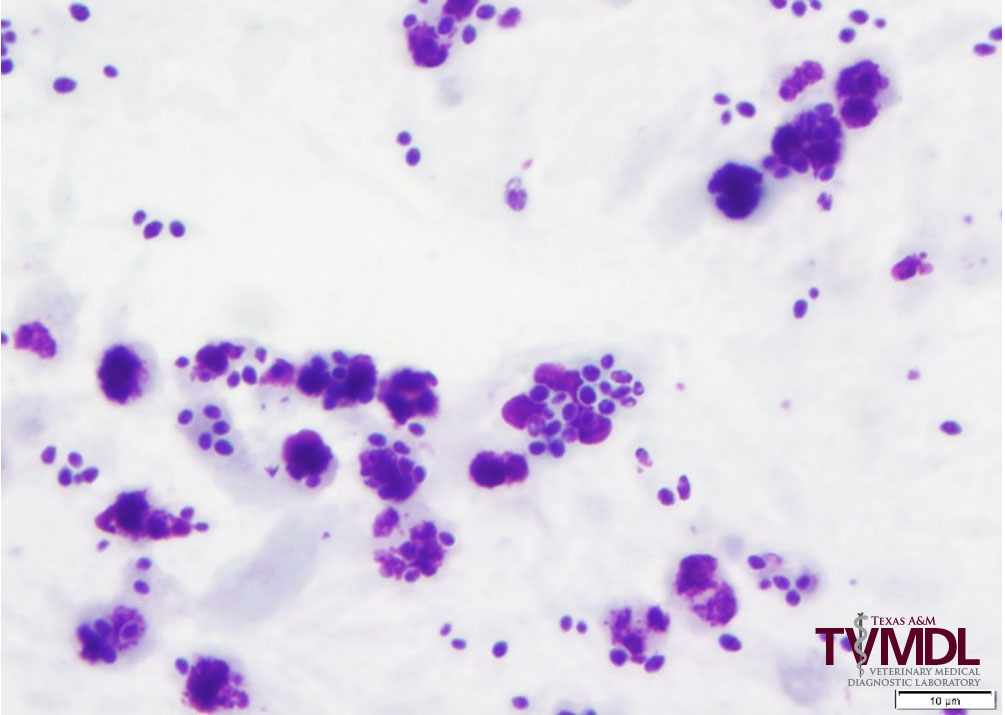Fungal Equine Endometritis
Judith Akins, DVM, MS
Vaginal/uterine discharge was submitted to the Texas A&M Veterinary Medical Diagnostic Laboratory (TVMDL) in College Station from an eight-year-old Warmblood mare for culture and a cytologic evaluation. Cytologically the discharge consisted of large numbers of degenerate neutrophils and marked numbers of yeast. The neutrophils were actively phagocytizing the yeast. There were no bacteria identified. The culture yielded a 4+ growth of yeast. Fungal endometritis was diagnosed.
Fungal endometritis in the mare is less common than bacterial infections. The more common sources for a fungal infection are the skin adjacent to the vagina and fecal contamination. The most commonly isolated fungi include Candida spp. and Aspergillus spp. Pneumovagina, chronic endometritis, and prolonged use of intra-uterine antibiotics may all play a role in allowing fungal yeast or hyphae to overgrow and cause disease.
For more information on TVMDL’s bacteriology or clinical pathology test offerings, visit tvmdl.tamu.edu or call the agency’s College Station laboratory.
